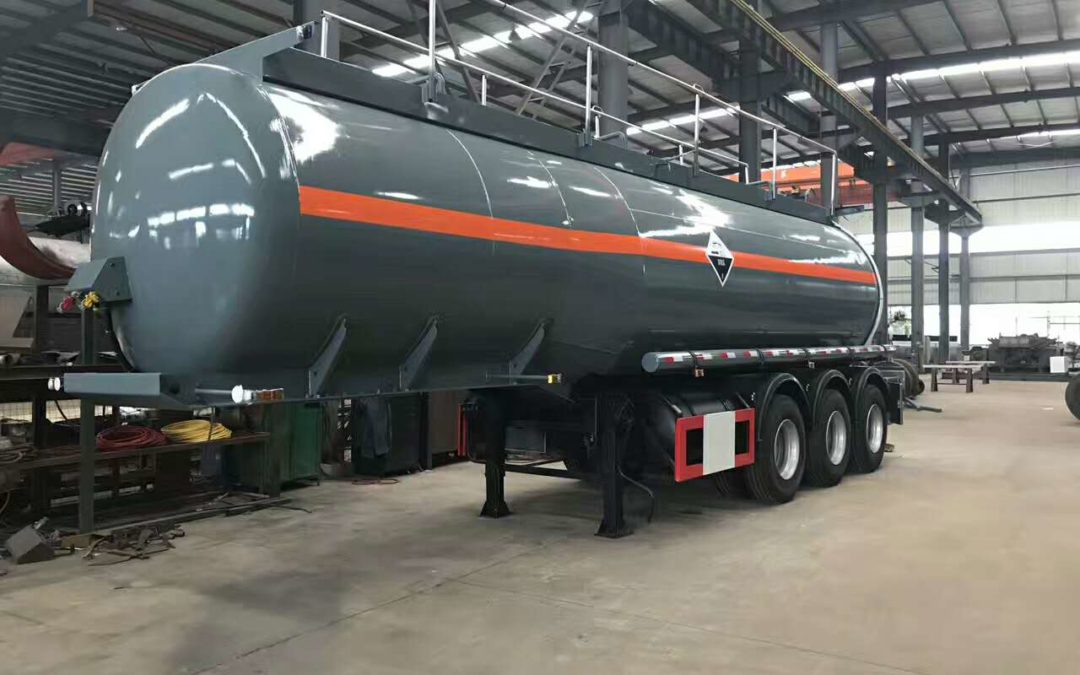Large amounts of hazardous substances and chemicals such as acids are a threat to human health and harmful to the environment at large.
The industrial production of such chemicals takes place around the world and this is done with a lot of caution especially in their location of production.
However, these acids for instance, would need to be transported to various destinations across the globe. Transport is very important when directing the flow of products to customers.
Some means of transport for acids would therefore require specialized packaging more than other types of goods. The storage and transport of acids has increased through advances in technology and production.
In that case, they would require an acid tanker in their transportation.
In this guide, we show you designs and specifications of acid tankers for many kinds of acid.
Tank Trailer Guide Book – Designs & Specifications of Tanker Trailers
Download Free Now!
Table of Contents
What is an Acid Tanker (Semi-Trailer)?
An Acid tanker is one that is used for transporting different kinds of acids such as: sulfuric acid, hydrochloric acid, hydrofluoric acid, Nitric acid and Acetic acid among others as used for different industrial applications.
Acids have different chemical and physical properties. In that case, different acids need different materials for the construction of their specific tanker.
However, it is not a must to have a different type of tanker for each of the various kinds of acids. In this post, we will show you two kinds of tankers that can transport most kinds of acids.
Get Detailed Specifications!
1. Structure
The dilute sulfuric acid, hydrochloric acid tanker is a multilayered structure. The outer structure is made of stainless steel or in some cases an aluminum alloy.
The inside part of the tank is made of Polyethylene (PE) lining. Though made through different processes, both the outer shell and the inner PE liner become part of the complete acid tank trailer.
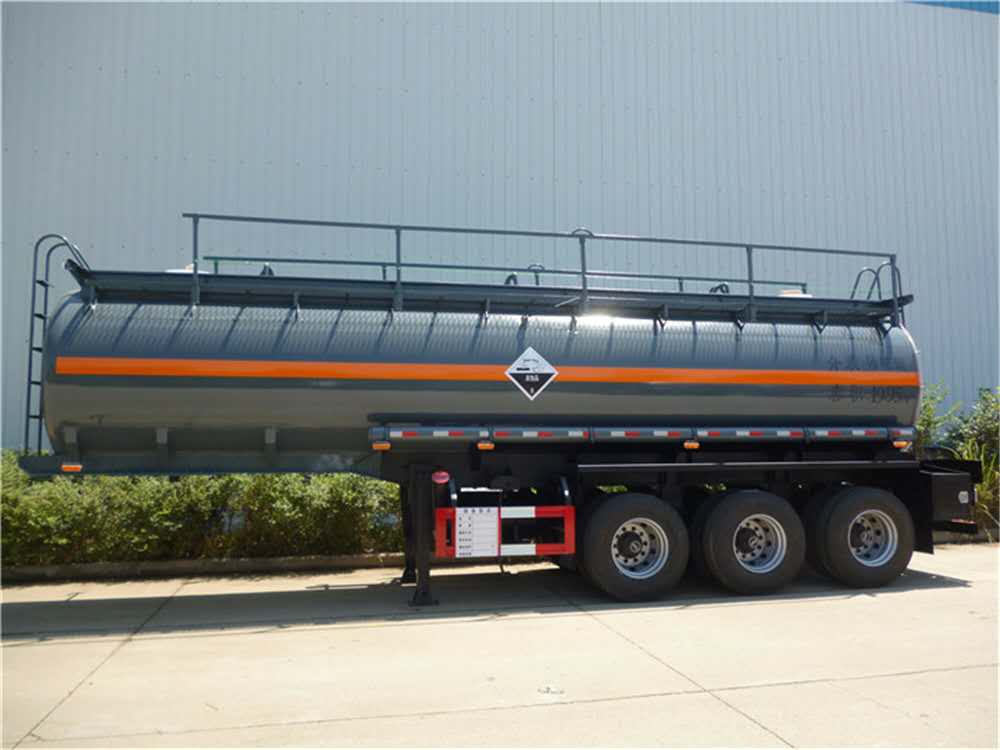
hydrochloric acid tanker trailer
The Nitric acid, Acetic acid tank is purely made of Aluminum without an inner lining material. Nitric acid, Acetic acid Aluminum tank is an ideal container for nitric acid,
because it has an oxide film on its surface, which has a passivation effect that prevents reaction that would lead to corrosion. Additionally, it is economical to use due to its light weight and cost implications.
2. Material
2.1 Dilute Sulfuric Acid, Hydrochloric Acid Tanker
The dilute sulfuric acid, hydrochloric acid tanker is made of a multilayered structure, with the outer part made of either stainless steel or an aluminum alloy.
In most cases, stainless steel has been the main structural material used for these types of tanks. Steel is prone to just a few products that are mostly acids.
However, stainless steel is resistant against dilute sulfuric acid and dilute hydrochloric acid. For this reason, these acid tanks made of stainless steel cannot be corroded.
- Why Stainless Steel is better
It is unlikely that steel would contaminate products and if it does, only a few like high quality caustic soda. Steel is an alloy of iron and carbon hence it is prone to attack by rust,
which is a chemical compound of the iron component known as iron (III) oxide. Rust would cause many problems of contamination of these acids if steel was used to make the structure.
Owing to this fact and among other reasons, it is unlikely that steel could be used in the construction of chemical tankers of this nature.
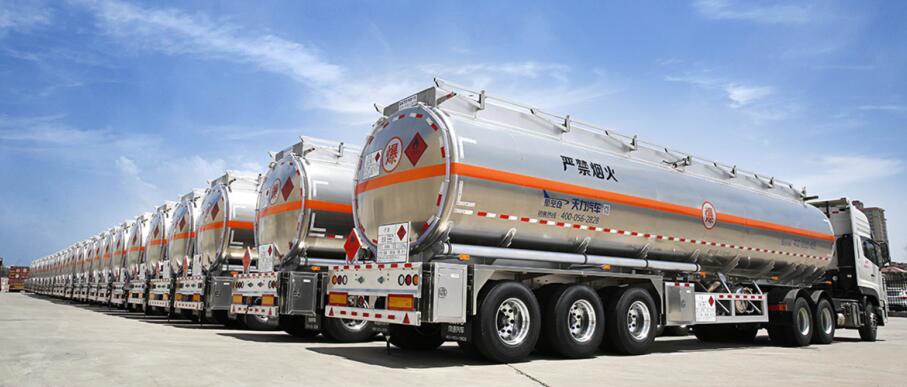
stainless steel tanker
Even though coating techniques for steel have been invented in recent times, they have not addressed the problem of substances that are aggressive to steel such as acids.
In that case, the acid tankers made of coated steel would still corrode. However, the use of stainless steel is the reason why dilute sulfuric/hydrochloric acid tank can’t be corroded. Here is an explanation for the same:
- Stainless steel is resistant to chemical activity hence cannot be easily corroded away by substances like dilute sulfuric/hydrochloric acid
- Stainless steel characteristics are due to the forming of a very thin, passive chromium oxide layer on the surface that prevents further chemical action on the metal alloy. This protective film remains intact hence no corrosion can take place in such conditions.
- The rustproof nature of stainless steels can be guaranteed based on the treatment procedure carried on the acid tankers.
- Low carbon contents are used to resist steel corrosion around the welds. Usually, carbon binds chromium to create chromium carbide in the weld zone affected by heat therefore reducing the resistance to corrosion of that region.
- Additives such as titanium have a neutralizing effect that can allow the additional carbon content. Small nitrogen additions are good in increasing the tensile strength of the steel.
- The Inner Part:
To prevent further corrosion, the inner part of the tanker is made of Polyethylene (PE) lining. This protects the inner part from environmental reactions due to the surrounding air that may lead to corrosion.
For this application, Linear Low-Density Polyethylene (LLDPE) or High-Density Polyethylene (HDPE) is used to make the inner parts of the dilute sulfuric acid, hydrochloric acid tanker inner.
Polyethylene (PE) fits this application because it is a material that is cannot be corroded by dilute sulfuric acid, hydrochloric acid.
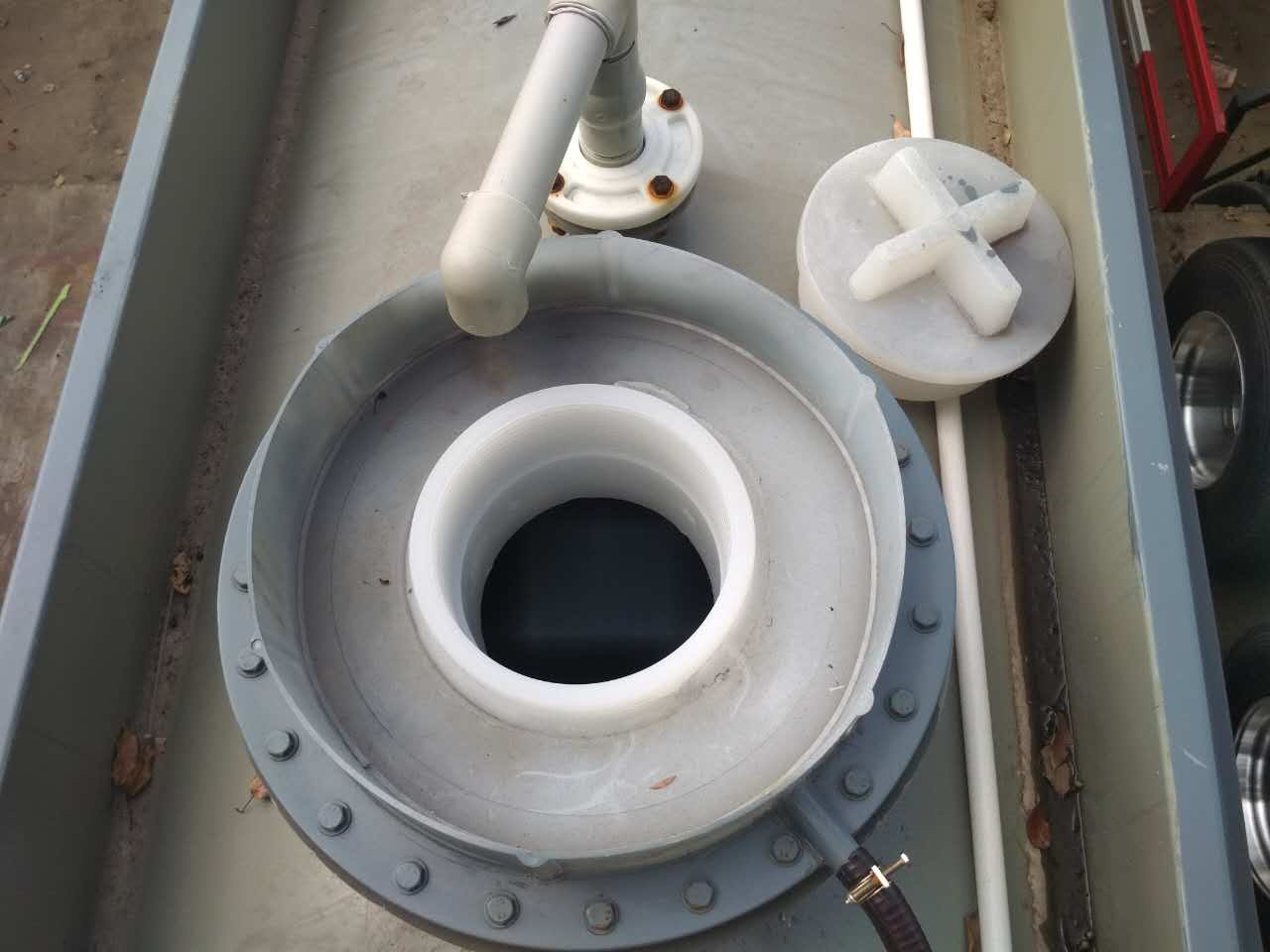
polyethylene inner
2.2 Nitric Acid, Acetic Acid Tanker
Nitric acid is a strong monobasic chemical substance that acts a powerful oxidizing agent with an ability to nitrate a number of organic compounds. The Nitric acid tank that can also be used for transporting acetic acid made of pure aluminum.
- Why Aluminum Tanker for Nitric/Acetic Acid?
With dilute nitric acid, Aluminum reacts to produce aluminum nitrate that is a corrosion inhibitor. Therefore, the tanker would not corrode because of this layer.
Concentrated nitric acid, usually >60% is a very powerful oxidizing agent that causes a thin layer of Aluminum oxide to form instantly and coats the surface of the aluminum.
The oxide coating on the surface of the aluminum is resistant to further attack by nitric and in that case no corrosion can take place. This process is known as passivation.
Therefore, nitric acid aluminum tankers don’t corrode due to the passivation process that takes place on the surface of the aluminum tank trailer.
Passivation in this case, involves a chemical reaction of the outer layer of a shield metal applied as a coating or may involve a spontaneous oxidation in water or air exposure.
Aluminum readily reacts with air and/or water to form aluminum oxide. This oxide forms a stable layer that is passive in nature and won’t allow further oxidation hence prevent corrosion.
This passivation technique preserves and strengthens the appearance of Aluminum.

aluminum tank trailer
Usually, acetic acid is mildly corrosive to such metals as zinc, magnesium and iron forming acetates and hydrogen gas.
However, acetic acid cannot react with the passivating acid-resistant layer formed on aluminum surface hence aluminum tanks can still be used for the transportation of acetic acid.
Note that: Concentrated sulfuric acid is different from dilute sulfuric acid. In that case, the concentrated versions of sulfuric and hydrochloric acids can be transported by carbon steel tank.
3. Corrosion Resistance Tank Body Construction
Polyethylene (PE) tank and Aluminum tank is unibody manufactured through rotational casting. The construction process is done with the idea of making the tank corrosion resistant in the end.
For the stainless-steel/PE tank for dilute sulfuric and hydrochloric acid, the process includes the forming of an outer shell made of steel.
Usually, these are several half layers of steel that get welded together in the end. The half members are made through a deep drawing procedure.
As indicated earlier, the inner part of the stainless-steel tank is made of PE. This is a non-corrosive material that is normally cast inside the already cast outer shell.
The inner part is manufactured through a rotational casting process. The external surface of the PE shell is normally located next to the internal surface of the outer steel shell.
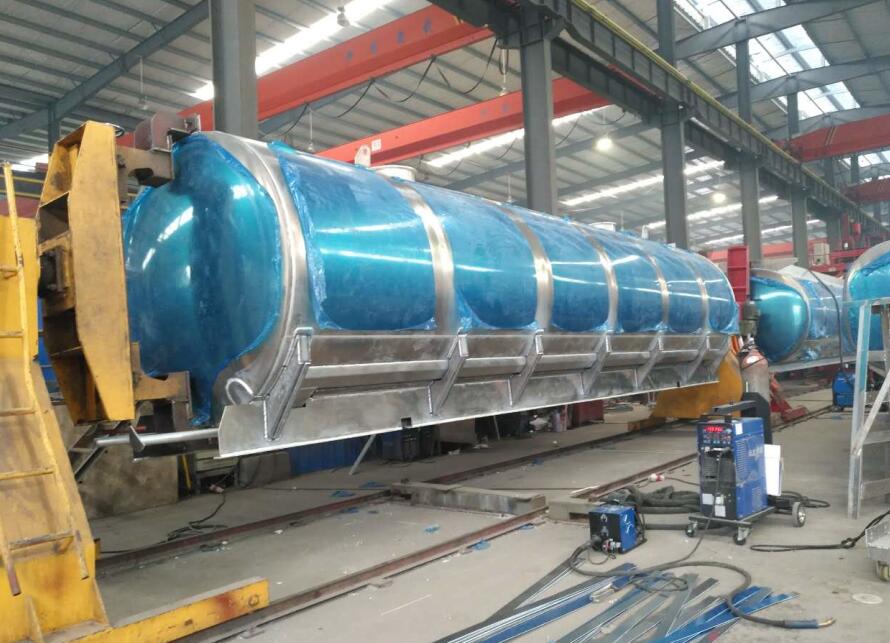
Corrosion Resistance Tank Body Construction
The PE inner shell offers a substantial leak-fight lining for the outer shell hence preventing contact between the outer shell and the tank constituents.
This prevents any reactivity that may lead to corrosion. The rotational casting is achieved through the charging of the outer shell with the PE and then subjecting the same outer shell to heat as it engages in a rotational casting motion.
In this application, the outer shell is used as the mold for the inner one under manufacturing. In this process, the outer shell doesn’t get detached from the inner shell but rather becomes a permanent member of the fully completed tank.
Important points to note:
- The passive layer that prevents reaction on stainless steel can be affected by certain species of chemicals especially the chloride ion Cl- usually found in salt and in bleaching agents. This is normally known as pitting corrosion. It is usually avoided by making a good choice of stainless steel that has not been in prolonged contact with such chemicals. Only the good grades are used for constructing the stainless-steel tanks.
- It is unlikely that stainless steel would corrode uniformly like many other alloy steels and carbon. Acids contained in stainless steel tanks can at times attack the passive layer based on their temperature and concentration. With time, the metal loss gets distributed over the steel surface. Sulfuric and hydrochloric acid tend to be aggressive to stainless steel at certain concentrations. For this application the tank trailers will not corrode henceforth because they carry the acids in a dilute form.
- Other forms of corrosion that can occur though quite rare are stress corrosion cracking due to certain factors of temperature, tensile stress and certain corrosive species like the chloride ion. Another is the intergranular corrosion and galvanic corrosion types that are usually well-taken care of through the choice of a good grade steel that does not have too much carbon in it.
4. Corrosion at Tank Flanges
All flanges are usually made of plastic to avoid corrosion that may find its way into other parts of the tank. Naturally, plastics are non-corrosive even when in contact with strong chemicals such as sulfuric acid and hydrochloric acid.
This is due to their non-reactive form with most materials you will ever come across. This helps in preventing the tank trailer from getting corroded.
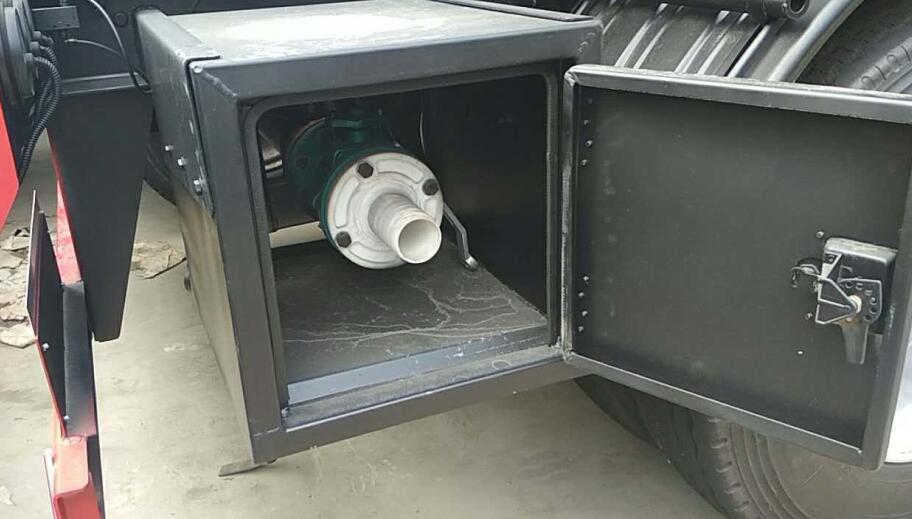
PE outlet
Most importantly, checks for crevices are checked and sealed to prevent corrosion that may begin in such regions. Stainless steel can be affected through crevice corrosion.
When the supply of oxygen cannot reach areas that have tiny crevices, the passive layer needed to protect against corrosion cannot form. Therefore, these crevices are usually sealed with the use of flexible sealant.
5. Acid Tank Trailer Safety Checks
It is true that acid tank trailers can’t be corroded. However, there are standard safety checks and procedures that should be carried out for all chemical tank trailers.
The long-term corrosion effect in steel chemical storage tank is the continued thinning of the tank wall section, especially at lower levels. This leads to imperfections of the shell.
The service life of these storage tanks is normally estimated to be in the range of about 20-40 years. To guarantee the safe operation of storage tank, the thickness of the tank should be tested once at least every two years, and every five years for an internal inspection at least.

Tank trailer leakage
There are quite a number of damage mechanisms that can cause the deterioration and failure of a storage tank.
For this reason, these checks are important to assess the condition of the initial tank surface quality needed to prevent this deterioration.
The integrity of a tank structure should therefore be check against, corrosion, chemical attack, erosion, creep, fatigue, mechanical damage and brittle fracture.
Here, we will see why corrosion checks are important despite having put measures in place in order to curb it.
- Corrosion is a prime cause of steel tanks’ deterioration and on their accessories too. While stainless steel tanks are resistant to attack, its continued use and exposure to different environments can make they susceptible to corrosion attack.
- Attacks through corrosion are rarely uniform. There at times can be random or localized pitting corrosion attack, especially in flat-bottomed tank floors. The acid temperatures are a contributory factor to this. The tank construction materials and their condition in addition to their durability and effectiveness of the base seal among other factors play a part in the corrosion resistance nature of the acid tanks.
When buying chemical tank trailers, this is useful information to apply to be able to make a good choice and use of your tank. The main deteriorating factor of acid tank trailers is corrosion.
This occurs mainly due to exposure to materials that react with the acids carried in them along with other substances such as water condensates and atmospheric oxygen.
Reference:
Tank Trailer Guide Book – Learn All about Different kinds of Tanker Trailers
Sulfuric acid, Hydrochloric acid, Nitric acid – Wiki

